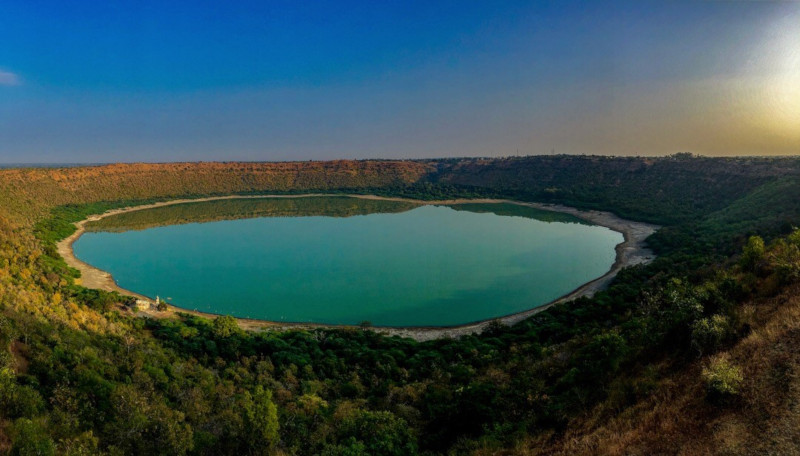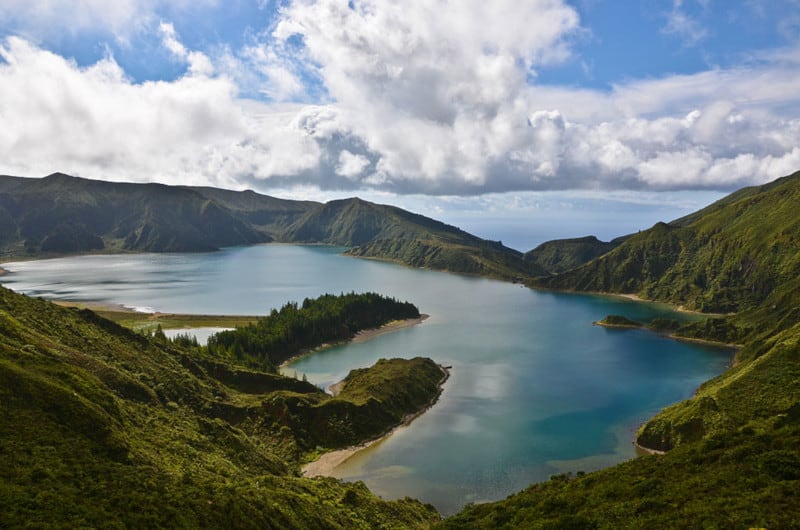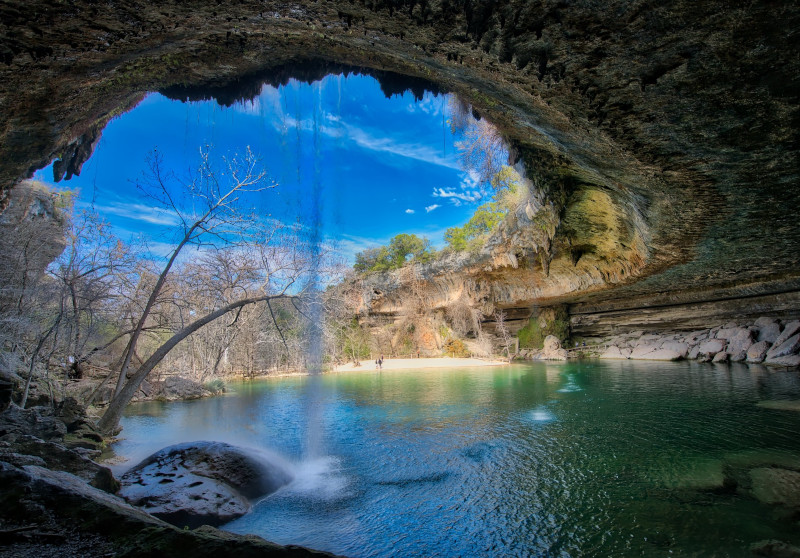
Caddo Lake Facts
- The intriguing title of Caddo Lake serves as the most frequently employed common name for this captivating creation of natural processes. Yet, it does have several other general titles. These include such terms as Big Cypress Bayou, Ferry Lake, and Saw Mill Pond, among others.
- Regardless of which of these monikers one chooses to use, the site stands out, both in the minds of many individuals, and officially. Its borders contain one of the largest flooded cypress forests in its region. It’s also one of the few natural non-oxbow lakes in the generally arid area.
- The local Indigenous Peoples long knew of the existence of this stunning natural marvel, of course. Archaeological evidence indicates that the ancestors of the Caddo people, the most recent to inhabit the region, lived in the area for centuries, utilizing the lake and its resources.
- European exploration of the area began in the 18th and early 19th centuries. While there isn’t a single figure credited with discovering the remarkable natural feature, both Spanish and French explorers in the region likely encountered the lake during their various expeditions.
- Its incredible and unique natural beauty and distinctive attributes continue to serve Caddo Lake well today, however. Due to these, the amazing feature now holds several formal distinctions which provide it with a certain degree of protection from the depredations of man.
- The site now represents part of an internationally protected wetland under the Ramsar Convention. It also serves as the linchpin component of the aptly-named Caddo Lake State Park and Wildlife Management Area. Efforts to protect and maintain its pristine state continue.
Related Articles




Caddo Lake Physical Description
The stunning Caddo Lake presents a remarkable face to visitors that rarely fails to captivate and amaze them. Yet, the awesome creation of Nature does so for more than just one reason. That’s because the wonder boasts both an impressive size and some fascinating individual features.
In terms of the former, though, its dimensions vary, given its unique nature. Overall, however, the main body measures roughly 10 mi (16 km) in length. The variations occur due to the fact that numerous winding bayous, channels, and wetlands that extend beyond its primary boundaries.
Its width also varies widely due to its irregular shape and extensive wetlands. On average, it’s about 3 -4 mi (5 – 6.5 km) wide in its broader sections, though some, especially the bayous and channels, measure much smaller. Its sprawling nature makes its dimensions highly variable in different areas.
These dimensions combine to provide it with a respectable total area. The primary body, not including outlying regions, covers approximately 25,400 acres (10,300 hectares). This makes the unique body of water the largest natural freshwater lake in the local region of the country it’s in.
Despite its expansive outward dimensions, though, Caddo Lake isn’t very deep. Its shallower areas average no more than 1 -4 ft (0.3 – 1.2 m). Its deepest, meanwhile, only reach around 20 ft (6 m). Overall, the mean depth of this distinctive, otherworldly site measures about 8 -10 ft (2.4 – 3 m).
Still other marvels await those individuals who choose to visit this fabulous site, however. Nature also blessed the lake with numerous small islands within its confines. Its labyrinthine structure even includes hidden inlets, winding channels, and, in many places, extremely dense tree growth.

Caddo Lake Location, Formation, and Ecology
The uncommon beauty of Caddo Lake formed in a region of the globe that’s already renowned for its abundance of natural wonders. The awesome feature’s location therefore likely won’t surprise many of you. That’s true since it formed as part of the greater landmass of North America.
More precisely, though, the beautiful wetland lies within the national borders of the United States. Its precise geographical placement puts the feature in the general south-central portion of the country. Coincidentally, it straddles the borders between the states of Louisiana and Texas.
Intriguingly, proposed theories vary as to the precise nature and date of the origin of this incredible wonder. No widely accepted definitive proof exists for any of them at this time, however. Nonetheless, certain of them do presently have more support from scientific evidence than others.
The preponderance of evidence indicates that, beginning sometime during the 12th or 13th century, a massive logjam began forming on the Red River. It further seems that this naturally occurring obstruction persisted for centuries, continuing to build, until cleared between 1833 and 1838.
At its height, just prior to its being cleared, the astounding logjam spanned about 160 mi (257 km). This caused the water to back up into the surrounding lowlands and wetlands, forming the swamp-like environment with slow-moving bayous and sloughs that currently exists today.
This site represents a highly unique and ecologically rich wetland ecosystem. It’s thus not surprising that it’s also home to a diverse array of plant and animal species. The lake’s combination of swamp, bayou, and open water habitats creates a vibrant and biologically significant environment.
The iconic bald cypress trees, with wide trunks and root structures dominate the landscape. These are well-adapted to the conditions and provide a habitat for many species. Draped from the cypress trees, Spanish moss also adds to the lake’s mystique and provides shelter for small organisms.
This marvel’s additionally filled with numerous aquatic plants such as water lilies, American lotus, duckweed, and cattails. These plants thrive in the shallow waters and help maintain water quality by filtering nutrients and providing habitat for fish and multiple other aquatic organisms.
Caddo Lake also supports a rich variety of fauna. This includes many fish species, including largemouth bass, crappie, catfish, and sunfish. Many amphibians and reptiles also live here, including alligators, turtles such as the alligator snapping turtle, frogs, and various snakes live here.
Birds also thrive here, with more than 200 species either living here or using it as a stopover in their movements. Mammals such as raccoons, beavers, river otters, and white-tailed deer inhabit the area. The dense vegetation and abundant water make the lake an ideal habitat for many animals.
Features Sharing Its Region



Check out our other articles on 7 Fabulous South American Plants, Goblin Shark, Red Beach, African Bush Pig, Purple Frog, Araripe Manakin, Coral Pink Sand Dune Beetle, Orinoco Crocodile









Leave a Reply